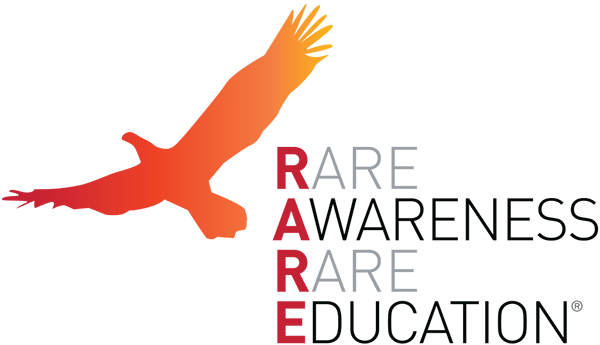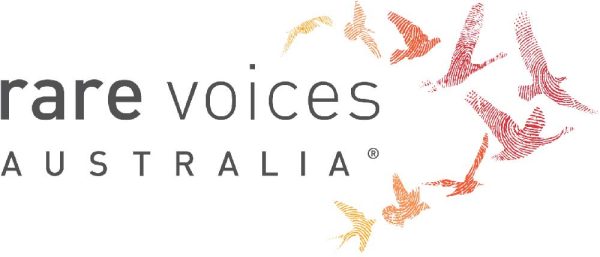47,XYY syndrome
Quick Search
- Summary
- Synonyms and Classifications
- Symptoms
- Disability Impacts
- Cause and Inheritance
- Diagnosis
- Treatment
- Clinical Care Team
- Clinical Care Guidelines
- Emergency Management
- Research
- Rare Disease Organisation(s)
- Lived Experience
- Support Services and Resources
- Mental Health
- Other Information
- Useful Links for Healthcare Professionals
Summary
47,XYY syndrome is a genetic condition that affect males.1 Males have 46 chromosomes, which includes one X and one Y sex chromosome. Individuals with 47,XYY syndrome have an extra Y chromosome and have 47 chromosomes altogether. This chromosomal change occurs randomly (de novo) before birth, and are not inherited. Symptoms may include delayed speech and language development, tall stature, certain distinct facial features, acne, behavioural attributes such as autism spectrum disorder (ASD), hyperactivity and others.2
47,XYY syndrome is one of the more common sex chromosomal conditions; however, it has been reported that most 47,XYY individuals are undiagnosed, misdiagnosed or have delayed diagnosis.1,2
Synonyms and Classifications
Synonyms: Jacob’s syndrome; Jacobs syndrome; Double Y syndrome; XYY syndrome; Y disomy; XYY karyotype.1,3
Universal rare disease classifications provide a common language for recording, reporting and monitoring diseases. Please visit the Rare Disease Classifications page for more information about these internationally recognised classifications.
Symptoms
The features of 47,XYY syndrome may vary widely between individuals.2
Common signs and symptoms of 47,XYY syndrome include:3,4
- delayed speech, language, and motor skills development
- tall stature that are noticeable since childhood
- certain distinct facial features, such as low-set ears, flat cheekbone (malar flattening), large head size (macrocephaly), widely spaced eyes (hypertelorism)
- asthma
- behavioural attributes such as attention deficit hyperactivity disorder (ADHD), impulsivity
- difficulties with learning and social interaction
- night blindness since birth
- low muscle tone (hypotonia)
- tremor
Please speak to your medical team to learn more about the features of 47,XYY syndrome.
Disability Impacts
Rare diseases are often serious and progressive, exhibiting a high degree of symptom complexity, leading to significant disability. Majority of the estimated two million Australians living with a rare disease meet the Australian Government’s definition for disability (in accordance to the Australian Public Service Commission and Australian Bureau of Statistics), and many experience severe and permanent disability impacts. If you or someone you care for is experiencing disability-related impacts from a rare condition, please speak with a health or disability professional for advice. Information about relevant disability support can be found at the RARE Portal’s Disability Support Information page.
Cause and Inheritance
47,XYY syndrome is a genetic condition caused by the presence of an extra Y chromosome.1 47,XYY affects only males, and not females. The condition occurs randomly (de novo) prior to birth and is not passed down (inherited) from their parents.
The condition often arises because a sperm cell that carries an extra Y chromosome (due to an error in sperm formation) fertilises the egg.2
There is a rarer form of 47,XYY syndrome called 46,XY/47,XYY mosaicism where the males only have the extra Y chromosome in some (but not all) of their cells. This is due to random errors in cell division during early embryo development.2
If you would like to learn more about the inheritance and impact of this condition, please ask your doctor for a referral to a genetic counsellor. Genetic counsellors are qualified allied health professionals who can provide information and support regarding genetic conditions and testing. More information about genetic counselling can be found at:
- Information on Genetic Services
- The National and State Services pages underneath the ‘Genetic Counselling’ sections listed
Diagnosis
There are no published consensus clinical diagnostic criteria for 47,XYY syndrome.
Diagnosis of 47,XYY syndrome may be made based on physical examination, medical history and chromosomal studies/karyotyping to detect chromosomes anomalies.1
47,XYY syndrome may be detected before birth through non-invasive prenatal testing (NIPT). NIPT is an optional screening test that can be used during pregnancy to determine if the developing baby has a high chance of having certain chromosomal conditions.5 Testing for 47,XXX syndrome may not be automatically included in all NIPT tests, and a positive result may need to be confirmed by other tests. NIPT testing is not covered by Medicare.6
More information about NIPT can be found at:
- Centre for Genetics Education: Non-invasive prenatal testing
- Pathology Tests Explained: NIPT (Non-invasive prenatal testing)
A differential diagnosis can rule out other conditions that have similar symptoms, such as Klinefelter syndrome, Marfan syndrome, Sotos syndrome.2
Please speak to your medical team to learn more about the available diagnostic pathways for 47,XYY syndrome.
Treatment
There is currently no curative treatment for 47,XYY syndrome. Treatment is targeted at managing symptoms (symptomatic management) and involves a multidisciplinary care team. This may include speech and occupational therapy, special education, behavioural intervention, hormonal therapy and others.1,2
Please speak to your medical team to learn more about the possible treatment or management options for your condition. Treatment will depend on an individual’s specific condition and symptoms. It is also important to stay connected to your medical team so that you can be made aware of any upcoming clinical trial opportunities.
Clinical Care Team
Clinical care for rare diseases often involves a multidisciplinary team of medical, care and support professionals. Please note that the information provided here is as a guide and that RVA does not necessarily monitor or endorse specific clinics or health experts.
Healthcare professionals involved in the treatment of 47,XYY syndrome may include general practitioners (GP), genetic counsellors, speech therapists, occupational therapists, psychologists and reproductive endocrinologists.1,2 The need for different healthcare professionals may change over a person’s lifetime and extend beyond those listed here.
Clinical Care Guidelines
We are not aware of any clinical care guidelines for 47,XYY syndrome in Australia. If you know of any relevant care guidelines, please let us know via the Contribute page.
Emergency Management
Individuals living with rare diseases may have complex medical issues and disabilities, which are not always visible. It is often useful to refer to their medical history as well as personal information such as a medical card, doctor’s letter, or if available, a rare disease passport, for relevant information.
Research
There are specific considerations around participating in rare disease research, including clinical trials. It is important to be mindful of issues such as data privacy, research ethics, consent and differences in research regulations between Australia and other countries.
If you are interested in finding clinical trials for your condition, please visit the following websites; however, there may not be any clinical trials available:
It is best to discuss your interest in any clinical trials with your medical team to determine suitability and eligibility.
Please note that RVA does not necessarily monitor or endorse each group/organisation’s operational governance and activities.
Rare Disease Organisation(s)
Australian Organisations:
Australian X & Y Spectrum Support (AXYS)
Website: https://axys.org.au/
XYY Syndrome Association of Australia Inc.
Website: https://xyyaustralia.org/
Please note that RVA does not monitor or endorse each group/organisation’s operational governance and activities. When engaging with a group, please consider the information on the RARE Portal’s Finding Helpful Peer and Community Supports page.
Lived Experience
47,XYY syndrome vary between individuals, and each person’s experience is unique.
If you would like to share your personal story with RVA, please visit the Rare Voices Australia: Share Your Story page. RVA will consider your story for publishing on our website and inclusion on the RARE Portal.
Support Services and Resources
For information on available government and social services that provide support for individuals with a rare disease, please visit the National and State Services pages.
Mental Health
People living with a rare disease, including families and carers, often face unique challenges such as diagnostic delays, misdiagnoses, limited treatment options, and limited access to rare disease specialists and support. These challenges may impact people’s emotional wellbeing and quality of life. Many people find it helpful to seek mental health and wellbeing support to cope with ongoing stress and uncertainty. Connecting with people who have shared experiences through a support group may also be helpful. Information about relevant mental health and wellbeing support can be found at:
- Mental Health and Wellbeing Support for Australians Living with a Rare Disease
- The National and State Services pages underneath the ‘Mental Health’ sections listed
Other Information
Further information on 47,XYY syndrome can be found at:
Useful Links for Healthcare Professionals
Human Phenotype Ontology (HPO): 47,XYY syndrome
Australian Family Physician: Non-invasive prenatal testing (2017)
Australian Prescriber: Non-invasive prenatal testing: an overview (2025)
References
- National Organization for Rare Disorders (NORD). 47,XYY Syndrome. Updated 3 October 2012. Accessed 15 May 2025. https://rarediseases.org/rare-diseases/xyy-syndrome
- Sood B, Clemente Fuentes RW. Jacobs Syndrome. Updated 10 September In: StatPearls [Internet]. Treasure Island (FL): StatPearls Publishing; 2025 Jan-. Accessed 15 May 2025. https://www.ncbi.nlm.nih.gov/books/NBK557699/
- Genetic and Rare Diseases (GARD) Information Center. 47,XYY syndrome. Updated February 2025. Accessed 15 May 2025. https://rarediseases.info.nih.gov/diseases/5674/47xyy-syndrome
- Orphanet. ORPHA:8 47,XYY syndrome Clinical Signs and Symptoms. Accessed 15 May 2025. https://www.orpha.net/en/disease/sign/8
- Centre for Genetics Education. Non-invasive prenatal testing (NIPT). Updated November 2021. Accessed 26 May 2025. https://www.genetics.edu.au/SitePages/Non-invasive-prenatal-testing.aspx
- Pathology Tests Explained. NIPT (Non-invasive prenatal testing). Updated 1 June 2023. Accessed 26 May 2025. https://www.pathologytestsexplained.org.au/ptests.php?q=NIPT%20(Non-invasive%20prenatal%20testing)
Contributors
This page is developed by Rare Voices Australia (RVA)’s RARE Portal team.
If you are aware of any additional information that may benefit stakeholders with an interest in this page, or if you notice any broken links or inaccurate information, please let us know via the Contribute page.

